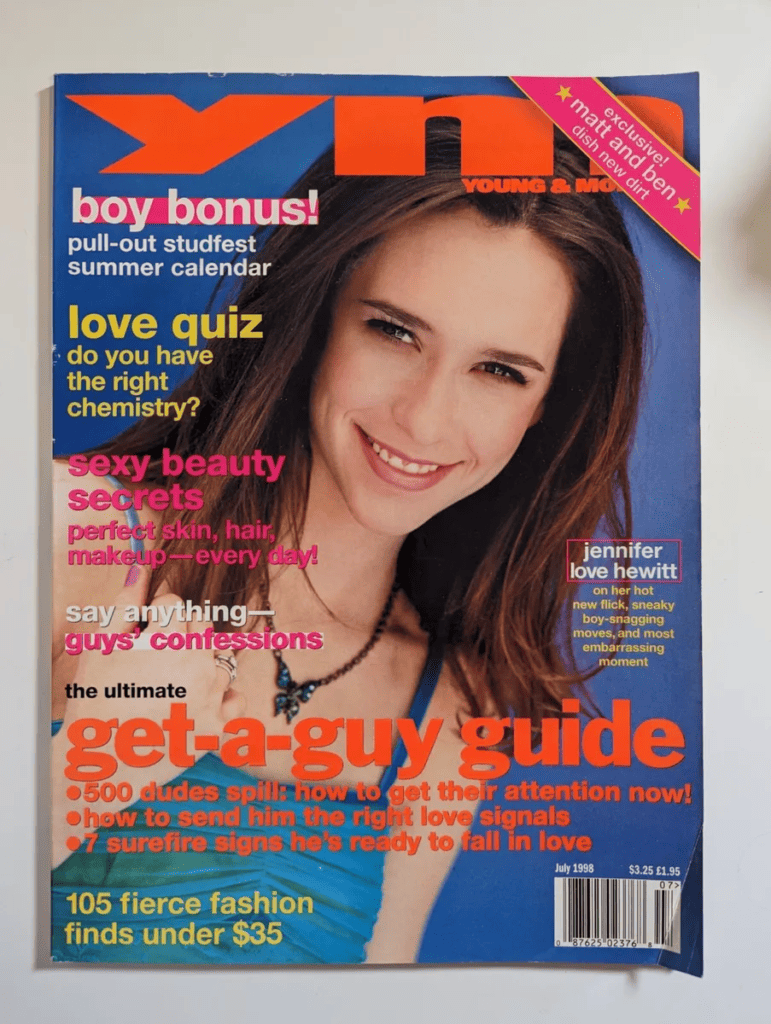


I was only 12 years old when I was initiated into an ever-so-lucrative marketing demographic: the TEENAGE GIRL. One September day in 1996, an unexpected rite of passage came addressed to me in the mailbox: a free edition of YM magazine! YM, like Teen and Seventeen, were magazines formed in the mid-20th century to market products and content to teenage girls. Little did I know that this “free gift” was a marketing ploy to lure another doe-eyed preteen into becoming a loyal subscriber. A marketing strategy or not, I was hooked. Soon enough I was filling out a subscription card with a glitter gel pen while my mom wrote out a check. It was a neon dream come true!
Teen magazines would become a tremendous influence on my formative years. I would join the tweens who every month strutted through the middle school hallway with a magenta magazine perched upon their trapper-keeper. We would read them over and over, cover to cover, the pages damp from kissing practice. In a decade when resources were tight-lipped, teen magazines were a peephole into the mysteries of growing up. The ads, which accounted for the bulk of the magazine, were not regarded as annoying but were coveted, collected, and scotch-taped to the mirror. They served as an imitation guide to which product brands were “cool” and which would devastate your status in the cut-throat middle-school hierarchy.
For me, YM wasn’t just a publication; it was a friend in an awkward new environment. Only in hindsight can I see the toxicity of that friendship. Although these magazines were created to promote self-confidence in young women, one could argue that they instead fostered insecurity and eroded self-esteem in a vulnerable juvenile population. The ads and content did not celebrate who you are but made you feel inadequate for not resembling an unattainable ideal. This fanned the flames of insecurity complexes in a highly combustible middle school society. The depreciation of self-esteem at a developmental age can have devastating effects on one’s psychological well-being that can carry into adulthood.
For the sake of research and nostalgia, I did a Google image search for my beloved 90’s YM magazines. The results were instantly recognizable; the cover models grinned back at me like conniving old friends. The crass headlines evoked a more visceral reaction. My retinae burned from headlines like “Get-a-Guy Guide: how to get his attention now,” “Perfect hair, skin, and makeup,” “Bonus: Pull out stud-fest summer calendar,” and “Banish fat days forever.” The scars of my youth throbbed. I cringe thinking about how I idolized this frivolous content that reduced teenage girls to boy-crazy shopaholics. As an adult, I am left to ponder how this relic of 90’s youth culture would shape my perspective of the world and myself. I conclude that It’s time I barf up my neon teen dream.